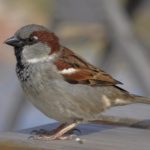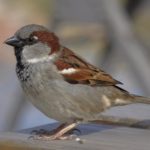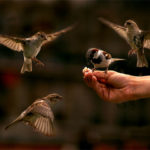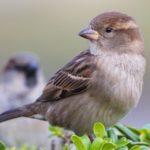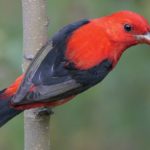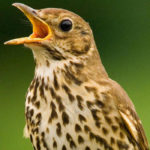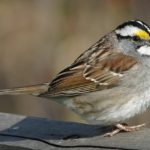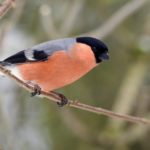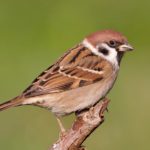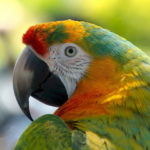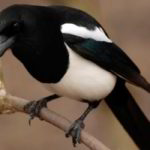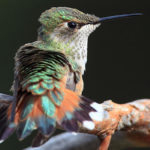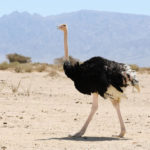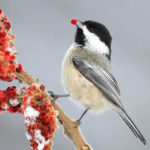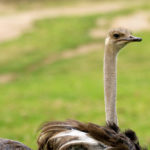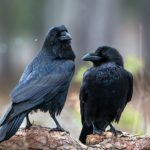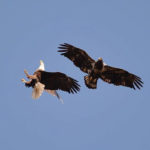Sparrows
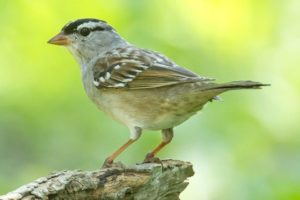 Sparrows are probably the most famous birds on the planet, because there is not a single city on Earth where they would not live. These constant companions of man often cause us sympathy, but at the same time, few people can boast of comprehensive knowledge of these birds. In fact, what do we know about sparrows: small nondescript birds that feed on anything, chirping under their feet and arranging swimming in the dust? That’s right, but this description concerns, in the first place, the house sparrow, and in the world there are other species of these birds, and their image does not coincide with the stereotypes that have developed in most.
Sparrows are probably the most famous birds on the planet, because there is not a single city on Earth where they would not live. These constant companions of man often cause us sympathy, but at the same time, few people can boast of comprehensive knowledge of these birds. In fact, what do we know about sparrows: small nondescript birds that feed on anything, chirping under their feet and arranging swimming in the dust? That’s right, but this description concerns, in the first place, the house sparrow, and in the world there are other species of these birds, and their image does not coincide with the stereotypes that have developed in most.
The systematic position of these birds is clear even to people far from biology, because sparrows have given the name to the most numerous order of birds – the Passerine. So in a broad sense, their relatives can be considered all feathered trifles, entering this group. In general, sparrows are usually called 33-35 species of the Vorobin family, to which the finches, weavers and astralds are closest.
The appearance of the sparrows is well recognized and fairly uniform. These are small birds 11-18 cm long with black beady eyes, short wings, a short tail and a short conical beak. The color of most species is unimaginative, which makes it easy to hide in the thick of dry grass or branches. As a rule, in sparrows, the abdomen is monotonous-gray, the wings and tail are contrast-brown, with feathers on them often having white spots or edges forming an expressionless striped pattern.
As for the head and upper body, their color in one case may be gray under the belly, in another case – dark under the color of the wings. In addition to species differences, sexual dimorphism should also be indicated, and it is well expressed in all sparrows, except for the field and African gray-headed birds. In females, regardless of the type, the head and throat are dull in color, and the males are adorned with ornaments in the form of a cap, cheeks, throat spots of black, white, chestnut or yellow.
Despite the averaging of the parameters, sparrows have universal adaptations to life in various environments. Their wings are moderately short and allow you to maneuver in the middle of the crown, but at the same time the flight is rapid and allows you to gain a significant speed on short straight segments of the distance. Thin paws are adapted to movement on a flat surface, while grasping claws allow them to grasp branches, stalks of tall grasses, wires, and also hung up by the belly on these dowds. On the ground they move with characteristic jumps, although the stone sparrow walks, like most birds.
As for the behavior of sparrows, it is most appropriate to compare it with the behavior of sly jackals. Sparrows are extremely cautious, quickly assess their rival and, if he poses a danger to them, without spending a second, cowardly retire. If a large animal is not dangerous, then the birds are brave and show impudent impudence. They can fearlessly incubate chicks in the nests of storks, herons and large birds of prey, because they know that they will not pay attention to them; Can steal food from the dog and cat food troughs directly during the meal of the hosts, believing that pets are too lazy to catch them; Can fly into the shops and peck grain directly from the bags in the market. In a word, the life strategy of these birds is reduced to the formula “catch me if you can, and if you can not, then I’ll have a bite here.”
The historical homeland of sparrows is Africa, where more than a dozen species of these birds live. In Asia, the total range of several species (tugai, saxaul, desert, short-sparrow sparrows) covers vast expanses from Israel in the west to China in the east, from Kazakhstan in the north to Indochina in the south. In Europe, several native species (eg, Spanish, Italian sparrows) inhabit mainly the Mediterranean region. All these species gravitate towards open areas, intersected by rocky ridges, groves, thickets of bushes. Open spaces for them are important as forage lands, and in woody thickets and on the cliffs sparrows prefer to equip nests.
